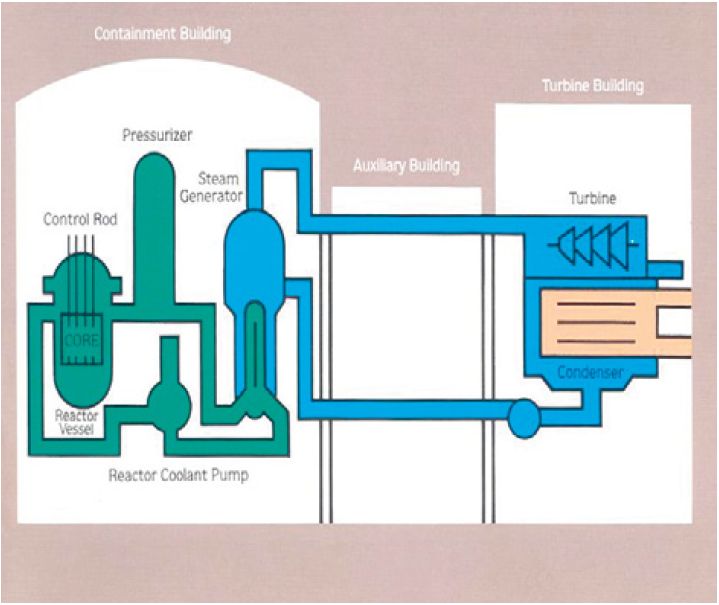Nuclear stations produce electricity
A nuclear power plant uses steam to generate electricity. Steam, created by heating water through energy produced by a nuclear reaction, drives turbine blades to spin. This rotational energy is then converted to electrical energy by a generator.
A nuclear power plant uses uranium as its fuel. Uranium atoms can be more readily split apart than other types of atoms. This process is called nuclear fission. When the atoms split, energy is released in the form of heat and radiation with fission products left behind. This is the heat source used to create steam in a nuclear power plant. The plant is designed to keep any radiation safely inside.

Once the steam has been used to spin the turbine, it is sent to a condenser. A condenser is a large vessel with thousands of small tubes. Cool water is channeled through these tubes while the exhausted steam from the turbine passes over the outside of the tubes. This process allows the heat of the exhausted steam to be transferred to the cooler water inside the tubes. This allows the steam to condense back into water, which is then recirculated through the system, starting the process over again. The water inside the tubes — now heated up after passing through the condenser tubes — is circulated through a separate cooling system, allowing it to safely release the heat it has absorbed, be cooled back down, and then circulated back through the condenser tubes.
Since the steam passing through the turbine and the water from the cooling tower system are in two separate systems, physically isolated from each other, the cooling tower water contains no radioactive contaminants. This water never intermingles with the water passing through the reactor.
When the atoms in the core split, radioactive matter is formed. The plant blocks its release in several ways.
1. Metal fuel rods seal the uranium and most of the radioactive matter inside the core.
2. A container with a steel wall 8 1/2 inches thick surrounds the core and seals it in.
3. A second container with a steel wall 2 inches thick is around the first one.
4. A concrete wall 3 feet thick seals in all of the other parts.

If there is an accident, the plant can block the release of all or most of the radiation. But in a severe accident, some radioactive matter may be released. If it is, this matter will be carried in the air. If that happens, an emergency will be declared. You may then be asked to do certain things to protect yourself until the wind carries the radioactive matter away.
